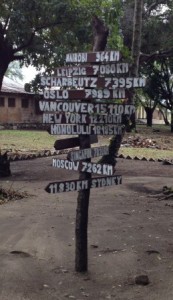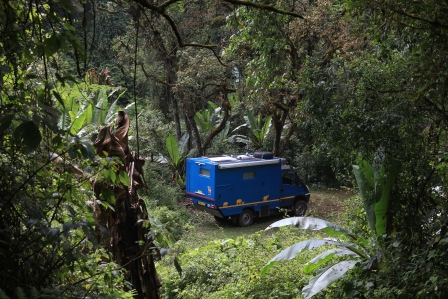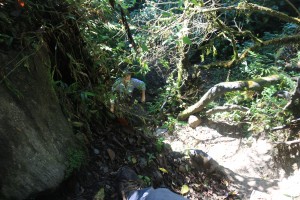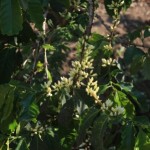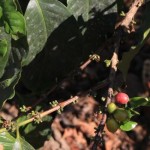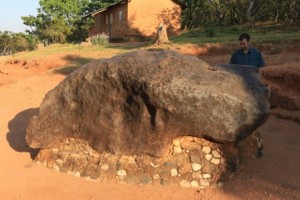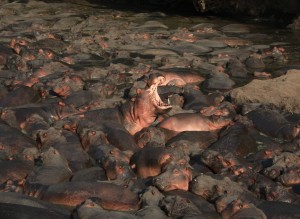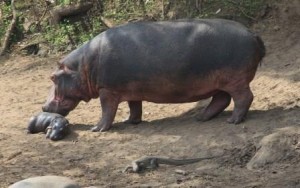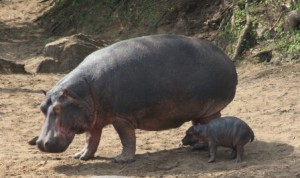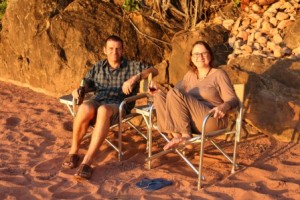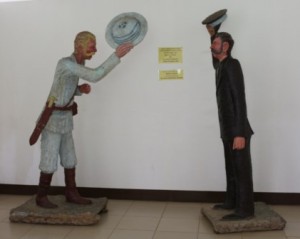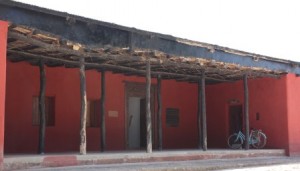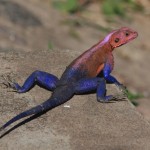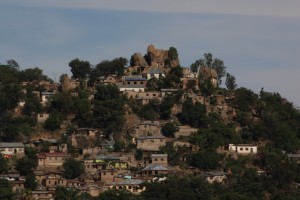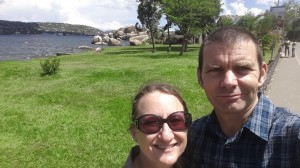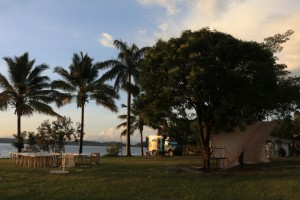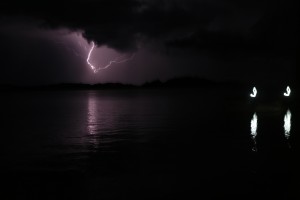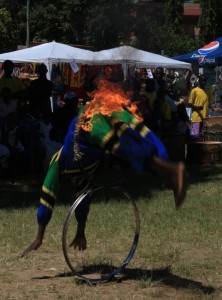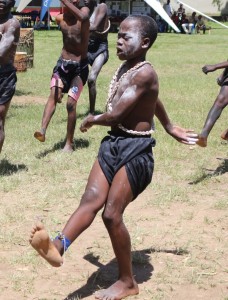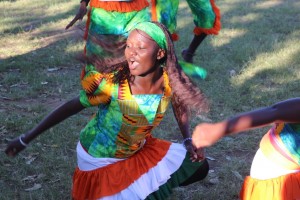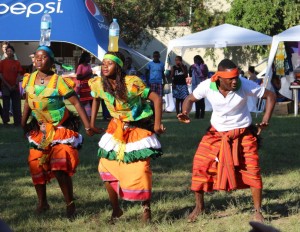October 2014
The Border to the End of the Lake
Followers of Cuthbert’s adventures in Malawi over the last few weeks will have read our reports of hopping from beach to beach, with a few detours into the ‘in-land’ mountains, up Lake Malawi from south to north. However the final northern tip of Lake Malawi is not actually in Malawi, but just over the border in Tanzania. It would be gravely remiss, and probably even negligent of us not to include in our detailed inspection report of the western lake-shore beaches, a few words on this far-northern section. So for the sake of maintaining our excellence in accuracy of reporting to you, dear Cuthbert follower, we have reluctantly forced ourselves to spend yet another few days at an idyllic lake-shore beach, sampling the local hospitality. We hope that the level of sacrifice we are making to this cause, does not go unnoticed or unappreciated 🙂
But before reaching our next arduous destination, we had a border to cross. And one lesson for the future that we learned on crossing this Malawi/Tanzania border, is not to attempt such activity during lunch-time. All was going very quickly and smoothly until we had to pay a US$25 road fee of some variety, to enter Tanzania. There was apparently only one cashier authorised to accept such funds and he had left for his lunch-break. We were assured he would be back “sometime soon…”. So we waited. And waited.
While we were waiting in the Immigration Office the dark clouds arrived with a tropical down-pour of torrential proportions; the first rain we had seen since the winter in South Africa almost five months ago. The down-pour was refreshingly cooling, but concerned us slightly because ‘The Rains’ are not due to start for another month or so. We have some rough tracks to travel up western Tanzania over the next few weeks and were hoping to negotiate these up to Lake Victoria, whilst they are still dry. Oh well! Looks like we may be testing Cuthbert’s ‘deep-mud capabilities’ sooner than we hoped!
Anyway, we are getting ahead of ourselves…… at this point we still had to enter the country and were still waiting to pay our roads fee to the ‘lunching-cashier’. Maybe he had a long-way to go for his lunch? Or maybe he had a particularly large lunch to gorge through? Or maybe he simply couldn’t be bothered to come back to work? Probably the latter of these options is most likely. Eventually he returned, we paid our fees and were on our way (some 3 hours later than originally planned) to the tiny but highly recommended Tanzanian beach-village of Matema.
After parking-up Cuthbert in the beach-camp and having a drink in the bar to watch the sunset, we settled down for the night. As we did so, the rains from earlier in the day returned with a vengeance. This time, not just ‘rains’, but rains… with a fierce electrical storm like nothing we have ever seen in Europe; booming thunder and spectacular lightning, lighting up the skies. Taking the pessimist’s ‘glass-half-empty’ approach to our assessment of lightning-strike probability, we counted the seconds between the ‘bang’ and the ‘flash’, trying to guess how far away we were likely to be from a potential lightning strike. At times it was extremely close and we decided to sit-out the storm for a couple of hours in Cuthbert’s front cab (as a more reliable ‘Faraday’s Cage’ than the plastic/foam construction back cabin). When the lightning lost its entertainment value, we watched an episode of ‘Big Bang Theory’ on the lap-top! In the morning all was clear, with a cloudless sky and a stunning sunrise over the eastern horizon of the Lake.
So…. drum-roll… how does the Tanzanian lake-shore compare to its Malawian counterpart? Well actually, we have to say that the northern point of the Lake is the most spectacular part that we saw. And that point unfortunately happens to be north of the border. The Lake is so narrow at its ‘apex’ that both the eastern and western shores can be seen disappearing down either side of the horizon as you look south. The western side of the horizon has views leading down into Malawi and the north-end of its Nyika Plateau; whilst in the eastern views, the splendid Livingstone Mountains of Tanzania fall steeply and spectacularly into the Lake. So the most scenic point on Lake Malawi, is not actually in Malawi! Much as we loved the beautiful Malawian Lake-shore, we must reluctantly (and with apologies to the lovely people of Malawi) admit that we ended-up inadvertently saving the best ‘til last… in Tanzania.
Saying our final “farewell” to Lake Malawi (or more correctly in Tanzania, Lake Nyasa) we headed north up into the Tanzanian Southern Highlands. This is a picturesque area of roads winding steeply around extinct volcanoes, with fertile soil for tea and coffee plantations, banana palms and a wide range of lush vegetation. The scenery became more and more beautiful as we headed towards the small town of Tukuyu.
Tukuyu was our first opportunity in Tanzania to buy a local SIM card for our internet access to re-engage with the outside world. So far on our travels we have had differing degrees of success in each country, obtaining local SIM cards and credit for data-bundles (see for example, in Botswana where we unwittingly bought-out the whole town’s phone-credit supply). The prices of mobile-data credit have also varied hugely around Africa. In Tanzania, Vodacom in Tukuyu provided us with a SIM card and enough credit for 30 days ‘unlimited use’ data for 20,000 Shillings (sounds scary, but its only £7.30!). That’s pretty good value by anyone’s standard!
So what’s the catch? Well the slight ‘snagette’ is that Tanzania still has only very limited mobile phone network coverage, and this is even more limited for a 3G connection. If you happen to be staying in one of Vodacom’s ‘chosen locations’ then you are, as the saying goes, ‘laughing all the way to the chip shop’. However we were on our way to see the Ngosi Crater Lake in the southern highlands – understandably not a top priority for mobile network coverage expansion plans. So our 21st century inter-webbery connection to the rest of the planet will have to wait until we reach the next population centre just up the road in Mbeya.
The track leading to the start of the crater-path looked fairly innocuous and easy-going at the start; a bit narrow between the trees but the surface wasn’t too rough and Cuthbert initially passed through with ease. But the track became narrower and the tree branches lower. The tough, stringy jungle vines (you know, the sort that Tarzan used to swing on in Hollywood) start dangling heavily across Cuthbert’s path. We always try to be environmentally friendly in these situations and not allow Cuthbert to have too damaging effect on the ecology, but in this case, let’s just say that a small amount of ‘creative topiary’ was required on the trees to avoid too much damage to Cuthbert 🙂
Its video time again… Cuthbert making his way down the track towards the Ngosi Crater .
Eventually we reached a small clearing in the trees where we would have to abandon Cuthbert and continue on foot up to the crater rim. However by this time it was too late to start venturing up the steep path. We decided to park-up in the jungle clearing for the night and do the walk in the morning. Mercifully, it didn’t rain overnight so the paths and tracks didn’t get too muddy. We had now had a few days without rain; it seems the down-pour at Matema beach was a one-off passing storm and not an early start to the rainy season. Phew! … the tracks up the western side of Tanzania should hopefully still be fairly dry then!
The next morning it was a very steep climb up to the crater rim, requiring scrambling with hands and feet in some places, over large protruding roots and under fallen tree-trunks. However the distance wasn’t as far as our guide book had indicated and we made it to the top after climbing for just over an hour. Our efforts were rewarded by a spectacular view of the lake inside the crater below us. It is a treacherous climb down into the crater which we concluded would be crazy to attempt (at least without the aid of an abseil rope and some Kendal Mint Cake). In any case, the lake is allegedly home to a mystical serpent which brings bad luck to anyone who swims in the water, so we would be well advised to steer clear of that particular activity 🙂
Our next stop was a pleasant couple of days parked-up at the Utengule Coffee Lodge in Mbeya, while we re-stocked with food, plundered the ATMs for some Shillings to cover the next few weeks in Tanzania, took an interesting walk around the coffee plantation to see the beans and had a nice meal in the restaurant to celebrate our Wedding Anniversary.
This ‘chill-out/down-time’ in Mbeya was all well and good, but we can’t hang around for ever you know! Cuthbert has places to go and things to see! So after a few days in the southern highlands we headed further into Tanzania. We decided to head up the little-visited western side of the country, via Katavi National Park and the shores of Lake Tanganyika (a bit of a ‘Lake-theme’ emerging here…… we like lakes 🙂 ).
The highway heading west out of Mbeya is the main artery across southern Tanzania, between the coastal ports and the border into northern Zambia. This results in a constant stream of cargo mega-trucks and petrol tankers, often with stacked-up trailers as big as the main lorry, hurtling along the single-carriage-way road at a speeds varying between 10 kmph on the up-hill sections, and 100 kmph on the down-hill sections. The abysmal quality of: (a) their driving and over-taking skills; (b) the deeply rutted road surface; and (c) the technical maintenance of the lorries; combined to make this one of the most hair-raising road we have tackled in Africa so far! Needless to say, we weren’t totally surprised when only about 20 km out of the town, we saw the first over-turned lorry in the ditch at the side of the road, with the driver still receiving medical attention at the side of the road!
En-route we took a small detour off the main road to see the Mbozi Meteorite – allegedly the fifth largest in the world, but no one seems to know how long it has been there!
Fortunately, as the road reached the border and most of the trucks headed into Zambia, we took a right-turn to the north, staying in Tanzania. The predictable reduction in lorry traffic was a great relief, and a pleasant surprise was the excellent condition of the road! Newly laid tarmac runs for around 200 km from Tunduma almost all the way to Sumbawanga. According to the signs at the side of the road, this has been provided courtesy of the people of the USA. Our thanks therefore go to Uncle Sam and the US tax-payers for a smooth ride!
Our first target destination in western Tanzania was the small but allegedly idyllic village of Kipili on the shores of Lake Tanganyika. However at Cuthbert speeds, this would be a 12-14 hour drive, so we decided to break the journey with a night-stop in the small regional town of Sumbawanga. Trying hard to think of something interesting to say about this place…. Errrrr… Nope! Moving swiftly on…
Dear Africa, This is how a lodge should be…
The next day we finished the journey to Kipili village and arrived in the remote Lake Shore Lodge, run by a very friendly South African couple, Chris and Louise. Other than a few places which we have highlighted for better or for worse on our African Campsites page, we haven’t specifically critiqued in these Travel Blog pages, the very many camp-sites that we have stayed at over the last 5 months. We don’t really see ourselves challenging Trip Advisor! However in the case of Lake Shore Lodge we felt the need to make an exception…
 Built by Chris and Louise themselves in a stunning location on Lake Tanganyika, Lake Shore Lodge is beautifully designed and immaculately maintained with fabulous attention to every detail in both the facilities and the service. The staff are friendly and well trained with very professional, high standards and the food is exceptional.
Built by Chris and Louise themselves in a stunning location on Lake Tanganyika, Lake Shore Lodge is beautifully designed and immaculately maintained with fabulous attention to every detail in both the facilities and the service. The staff are friendly and well trained with very professional, high standards and the food is exceptional.
Rest of Africa, please take note: Lake Shore is not only a great example of how good a remote African lodge can be, it is also conclusive proof that it is possible to run a high-end establishment alongside a small, but equally high-quality camp-site.
With the possible exception of Ivory Lodge near Hwange Reserve in Zimbabwe (which we also loved and comes a close second to Lake Shore), none of the other camps that we have visited come even close to the standards here. As we English sometimes say: “Rather splendid!” 🙂
Hippo Baby!
Moving on… hard though it was to drag ourselves away from Kipili and Lakeshore, after 5 days we decided that if we didn’t move soon, we might never leave! So we took the road north (well, ‘road’ in the loosest sense of the word – Cuthbert could rarely do more than 30 mph!) towards Katavi National Park.
Here we camped on the riverbank alongside hundreds of hippos all crammed into the muddy water. The rains will start any day soon and the wildlife will be able to disperse across the swamps and plains. But for now at the very end of the dry season, they are all crammed into the last few remaining water sources and make a marvellous spectacle. There are so many hippos packed tightly into the remaining small muddy areas of the rivers, slumped over each other’s backs, grunting loudly and jostling for space in the sun. From a distance they look like wobbly boulders in the river, then on closer inspection the pink flashes of their noses and ears pop into view and the occasional wide-jaw yawn stands-out in the crowd! So entertaining and fascinating to watch at such close quarters! They stay mostly in the water/mud during the day, but often come out onto land at night to graze. From our bed in Cuthbert we could watch them in the moonlight, wandering quietly around us munching the grass in the camp-site.
The noises that the hippos make to each other are also fascinating, not to mention the ‘smell-o-rama experience’. Luckily for you, the internet has not yet developed ‘scratch’n’sniff’ technology! And luckily for us, the wind was mostly in the opposite direction so we only got the occasional whiff of the not-so-fragrant hippo-aroma.
Over our time in Africa we have spent many days and nights parked-up alongside hippo-rivers, watching and listening to their jostling, splashing and grunting. Admittedly Attenborough has nothing to worry about from us yet, but we have from our observations, learned a little bit about the hippos’ noises and behaviour. Tonight however, we were woken by an extraordinary loud grunting noise from the river. It sounded different to the ‘normal’ hippo-rama riot, slightly higher-pitched than we had heard before, almost wailing.
We couldn’t see anything in the dark, so we guessed it was probably adolescents having a bit of a barney, and we went back to sleep. Hours later in the morning, we went for a walk along the river and saw on the opposite bank, a tiny hippo lying in the sand with a mother standing watch over it, occasionally nudging it with her nose. It suddenly dawned on us that this is what we must have heard during the night – a baby hippo being born! If it was…. how exciting! We then met a local chap on the riverside who confirmed our thoughts.
We watched the mother and baby for a while and noticed with gradual horror that the baby did not seem to move. It just lay there, lifeless on the riverbank. A large monitor lizard twice tried to approach the baby hippo across the sand, but the protective mother chased it away and went back to nudging her baby, who still didn’t seem to move or respond. We stood there with increasing dread and sadness, wondering if we were witnessing one of the cruellest parts of nature, when suddenly the baby sprang to its feet and started feebly stumbling around its mother! After a bit of orientation, the baby followed its mother down the bank to the water. Wow – an amazing start to the day! Later that morning we set off on our travels, hardly believing our good fortune and privilege at being able to witness this incredible moment!
November 2014
Moving on north again, we headed through some pleasant countryside on the long, rough drive further up western Tanzania to Kigoma, a port on Lake Tanganyika near the Burundi border. Up here we are once again very much in ‘Livingston’s footsteps’. For various reasons (mostly because we procrastinated and took far longer than reasonable to make our minds up what to do that morning – I’m sure Livingston himself never had this kind of trouble 🙂 ) we were late setting off from Sitalike hippo-home. On seeing the rough condition of the road on which Cuthbert could rarely do more than 40kph, we realised that we had no chance of making it all the way to Kigoma before dark.
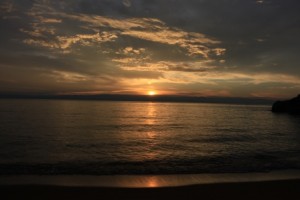
Pleasant view over Lake Tanganyika to the hills of a dodgy country – this is the closest we will get to Congo!
For anyone not familiar with the concept, it is an established fact that only a crazy person continues driving after dark in rural Africa. Well yes, we are arguably a bit crazy, but no so bonkers as to take-on in the darkness, hazards such as: massive pot-holes, wandering animals/people, and vehicles (everything from bicycles to mega-trucks) drifting randomly around the roads without any lights or reflectors. In the afternoon, we therefore decided to look for a wild-camp spot to break the journey. On some scenic high ground, about half-way between Katavi and Uvinza, we found a pleasant spot to pull off the road and park Cuthbert up for the night.
Next morning we continued the journey on past the salt-flats of Uvinza; from there we were pleasantly surprised to find a smooth new tarmac surface for the last 80km or so, all the way down to the lakeshore in Kigoma.
There are some idyllic beaches on the south side of Kigoma, but the other reason that the area receives a small trickle of travellers, is to see the spot in nearby Ujiji where Henry Morton Stanley allegedly uttered the famous words: “Dr. Livingstone, I presume?”. As the guide books predict, the memorial monument and museum at the site are ‘underwhelming’ (to say the least!) and disappointingly fail to make anything of the truly remarkable story of two great explorers.
Livingstone’s journeys and activities in Africa have been a recurring theme in many of the locations we have visited in Africa so far. From his famous ‘discovery’ of Victoria Falls (or at least the naming of them) to the Christian mission settlements in Malawi and his camps along the old slave-trade routes in Tanzania, we have read several accounts of Livingstone’s explorations. As we covered some similar routes in the comfort of Cuthbert, with the many benefits of 21st century technology, we can only imagine with big respect, how arduous it must have been for him and his companions: cutting their way through hundreds of miles of unchartered jungles and deserts, walking or ox-back riding, suffering both severe droughts and overwhelming floods. Livingstone alone survived over 70 bouts of malaria and was frequently held to ransom by tribes demanding his possessions in return for safe passage past their village. All this puts into perspective our ‘suffering’ of a few mossie-bites, an occasionally over-heating fridge and having our Wallace & Gromitt sat-nav pinched at a Namibian petrol station!
Anyway, after a few days at Jacobsen’s Beach near Kigoma enjoying the pretty little beach and stunning sunsets over the Lake to Congo in the distance, we decided to head east a bit. Following Livingstone’s steps, and also coincidentally the historically gruesome ‘slave route’, we headed to Tabora in central Tanzania, constantly in awe of the huge distances that we could now see across the plains as we drove.
This is another long leg of our journey which would not be possible in Cuthbert in one day, so again we planned to do a wild-camp somewhere suitable on the way. For anyone planning this as a route, the Kigoma-Tabora road is now newly tarred on some sections and therefore a bit faster than we anticipated. With an ordinary 4×4 the journey is probably do-able in a single hit if you start-out early, but there are still some quite slow and rough sections to slow you down over the 450ish km.
At last, justice to the Livingstone story
There is probably a good reason why very few visitors come through Tabora. We guess that these reasons are probably: a) it is in the middle of nowhere; b) there isn’t much to see; and c) it really is a long way into in the middle of nowhere!
But the small town of Tabora is not wholly disagreeable and it is the place to which Livingstone and Stanley retreated after their legendary meeting in Ujiji (see above, Dr. Cuthbert, I presume?). We decided to visit the house where Livingstone stayed during his several months here, which is still standing just outside the town. After all, it couldn’t be any more disappointing than the Ujiji meeting place so-called ‘museum’ 🙁
In fact Livingstone’s Tabora house turned out to be an interesting and worthwhile de-tour from the town. The museum is a little short on artefacts but there are pictures, some of the letters that he wrote, even a lock of his hair donated to the museum by the UK Government after Livingstone’s burial in London. The curator gave us an interesting guided tour, bringing the few items to life by explaining the story not only of Livingstone himself, but also that of the slave-trade in the East Africa, that Livingstone had fought so hard to abolish. Unlike the sad example at Ujiji, this site was both informative and enjoyable. In the unlikely event that you ever happen to be passing through central Tanzania on your way to somewhere, we can recommend a stop-off here!
There are no proper campsites in Tabora, so rather than drive out into the countryside to find another wild-camp spot, we arranged with one of the hotels in town to park-up for the night in their car park. Hotel car parks are generally not the prettiest places to camp, but we have done this in a few towns when necessary. They are usually guarded and secure in the town centre and the hotels are happy to see the extra business in their bar/restaurant, so it’s a ‘win-win’ situation 🙂
We can see clearly now the rain has come
A bit like the intro to a song, but different! 🙂 Diligent readers of Cuthbert’s tales may recall that throughout our time in Malawi we moaned about the absence of clear skies; that the views showed promising signs of being stupendous… if only we could see them properly through the hazy gunk that we called “The Malawi Murk”!
Well we have now had a couple of torrential rain storms to clear the air. Wowser…! What a difference! We can see for miles! Here’s the evidence:
After a two day drive from Kigoma to Tabora, we next had another long 450km drive north to Mwanza on yet another lake. Following on from Lakes Malawi and Tanganyika, this time it’s Lake Victoria.
Mwanza is the second largest town in Tanzania and after three days of pretty much non-stop driving, we were looking forward to having a few days rest here. It is a rather unusual town with all the properties built amongst a massive, granite boulder field. Some of the boulders look to have toppled into the bay creating small rock-islands around the shore line. It’s very pretty and the water looks inviting, but unfortunately there is a significant chance of becoming a crocodile’s lunch if you go in for a swim.
We parked Cuthbert in the Yacht Club campsite in a lovely spot, perhaps not surprisingly for a yacht club, right on the lake edge! And we were the only ones there, with a great view out over Lake Victoria. Not only that, but the icing on the cake… a 3G internet connection! So we can take advantage of our unlimited data-sim package, catching-up on emails, Facebook and i-tunes downloads! Nice!
The next morning was a Friday and a team arrived to erect some large Pepsi-sponsored sun awnings and a small marquee on the lawns in front of Cuthbert. We puzzled about this… turned out to be preparations for a Christmas Craft Fair over the weekend in the campsite. Oh no! A mass invasion of the lawns that we, only slightly unreasonably, considered to be Cuthbert’s own private lake-side garden 🙂
Unfortunately, as sun rose on the Saturday morning a (now increasingly frequent) ferocious electrical storm passed through the camp. As the lightning bolts flashed brightly all around us, we sat-out the storm in Cuthbert’s ‘Faraday’s Cage’ front cab. The gale force winds bent over the palm trees and branches came flying off, landing on the ground around Cuthbert. We sat and watched as first, some of the smaller Pepsi sun-awnings stated to break apart, then the larger marquee was up-rooted, smashing into the nearby trees. We pulled Cuthbert forward slightly so as to be out of the likely path of any more flying debris, until the storm subsided. The amazing thing with these tropical seasonal storms, is that they are mostly fairly short and they disappear as suddenly as they arrive. As the storm moved on across central Africa, the sun came up, the sky cleared, and it was a lovely day for the team to come and quickly re-erect the tents before the stall-holders arrived to set-up with their wares!
The craft fair stalls were selling a range of handmade Christmas decorations and gifts, and they were occasionally playing carols over a poor quality loud-speaker, but it obviously didn’t quite create the same feel as a European Christmas Market. For a start, there was a distinct lack of mulled wine 🙂 (hardly surprising really, with temperatures in the high-20s!). But it was a fun ‘village fete’ atmosphere, with performances of traditional local dances and some quite impressive gymnastics from the local kids’ club.
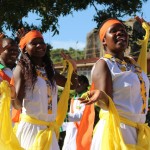 Notwithstanding the slight interruption to our peace for a couple of days by the Christmas Craft Fair, we really enjoyed our time in Mwanza and stayed for 5 days. It was a good place to relax a bit after three days of driving, to do some laundry, give Cuthbert a good clean out, and do some planning for the next phase of our trip. Now it’s decision time….. Rwanda or Uganda next?
Notwithstanding the slight interruption to our peace for a couple of days by the Christmas Craft Fair, we really enjoyed our time in Mwanza and stayed for 5 days. It was a good place to relax a bit after three days of driving, to do some laundry, give Cuthbert a good clean out, and do some planning for the next phase of our trip. Now it’s decision time….. Rwanda or Uganda next?
From north-west Tanzania we have the choice of three countries to move-on to: Burundi isn’t looking too bright at the moment, but Rwanda and Uganda both look good, and both have the sought-after gorilla tracking. We’ll be back in Tanzania when we head south again next year, but for now….. Rwanda’s gorillas have won the coin-toss!
Here is a quick overview map of our route in Tanzania so far (note: red line = our route on this trip in Cuthbert; blue line = our previous trips in other vehicles).
Tune-in to Cuthbert’s Rwanda-blog page for the next instalment and (hopefully) some exciting tales of close encounters with gorillas!
To slightly mis-quote Arnie: “We’ll be back….” Click here for the story of our later Return to Tanzania (after Rwanda, Uganda and Kenya) for the New Year 2015 celebrations and the southbound route down the eastern coast.


